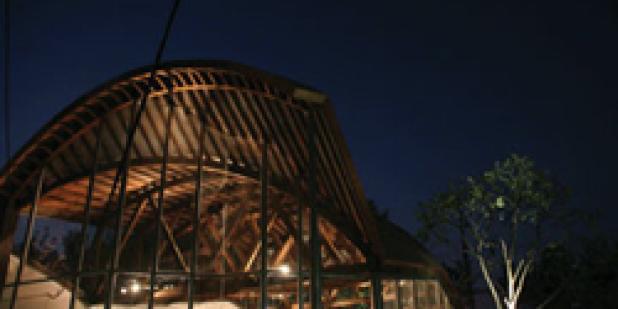Join us for a free one-day workshop for educators at the Japanese American National Museum, hosted by the USC U.S.-China Institute and the National Consortium for Teaching about Asia. This workshop will include a guided tour of the beloved exhibition Common Ground: The Heart of Community, slated to close permanently in January 2025. Following the tour, learn strategies for engaging students in the primary source artifacts, images, and documents found in JANM’s vast collection and discover classroom-ready resources to support teaching and learning about the Japanese American experience.
History Recycled: Photographs of Architectural Design by Deng Kunyan
UC Berkeley presents an exhibition of the photographs of designs by Taiwanese architect Deng Kunyan, a pioneering figure in the movement to revitalize Shanghai's desolate industrial spaces for contemporary use.
Where

Deng Kunyan, a Taiwanese architect living in Shanghai, was a pioneering figure in the movement to revitalize Shanghai’s desolate industrial spaces for contemporary use. Deng first came to prominence as a designer in the Taipei of the 1980s. His Nostalgia Café (1985) and Apocalypse Now Bar (1985) helped forge a new kind of fashionable consumer space for the increasingly affluent younger generation in Taipei after the “take-off” of the Taiwanese economy. His juxtaposition of the vocabulary of modern design —clean, bright, transparent, and metal surfaces — with nostalgic elements like vintage bottled drinks, old fashioned snacks, and Taiwanese folk songs heralded a new postmodern style. And in the still politically oppressive political climate of the time, Deng’s work seemed to presage the termination of Martial Law two years later.
Mr. Deng moved to Shanghai in 1990. He was fascinated by the culture and history of the city and spent many years losing himself in its labyrinthine lanes and alleyways. In 1997, Deng rented the warehouse overlooking the Suzhou Creek at 1305 South Suzhou Creek Road. The warehouse was built in 1933 and was rumored to have been owned by Du Yuesheng, head of the “Green Gang,” and Shanghai’s underworld boss in the 1930s. Deng renovated this space as his design studio, and became the first person to rediscover the beauty and utility of Shanghai’s abandoned industrial heritage. The success of the warehouse project sparked an artistic renewal of the surrounding industrial district and helped spare many old factories from demolition.
Mr. Deng subsequently switched his focus from Suzhou Creek to the Huangpu River, where he redeveloped a 1920s GE factory into a “Creative Shanghai Park” to nurture Shanghai’s emerging cultural industries. The Park opened in 2004, the same year Deng won the UNESCO Asia-Pacific Heritage Awards for Culture Heritage Conservation. The citation noted that “the innovative adoption of the warehouse for reuse as a design studio demonstrated the feasibility of recycling industrial buildings and the practicability of rehabilitating such heritage structures for modern uses” and cited “the large scale impact that an individual, pioneering restoration project can have in focusing public attention and policy making on new conservation agendas, in this case, Shanghai’s industrial history.”
Deng’s work is in this sense not merely “design,” but a form of social action, initiating a remapping of Shanghai spaces and its urban legacy from the bottom up.
Featured Articles
Please join us for the Grad Mixer! Hosted by USC Annenberg Office of International Affairs, Enjoy food, drink and conversation with fellow students across USC Annenberg. Graduate students from any field are welcome to join, so it is a great opportunity to meet fellow students with IR/foreign policy-related research topics and interests.
RSVP link: https://forms.gle/1zer188RE9dCS6Ho6
Events
Hosted by USC Annenberg Office of International Affairs, enjoy food, drink and conversation with fellow international students.
Join us for an in-person conversation on Thursday, November 7th at 4pm with author David M. Lampton as he discusses his new book, Living U.S.-China Relations: From Cold War to Cold War. The book examines the history of U.S.-China relations across eight U.S. presidential administrations.




